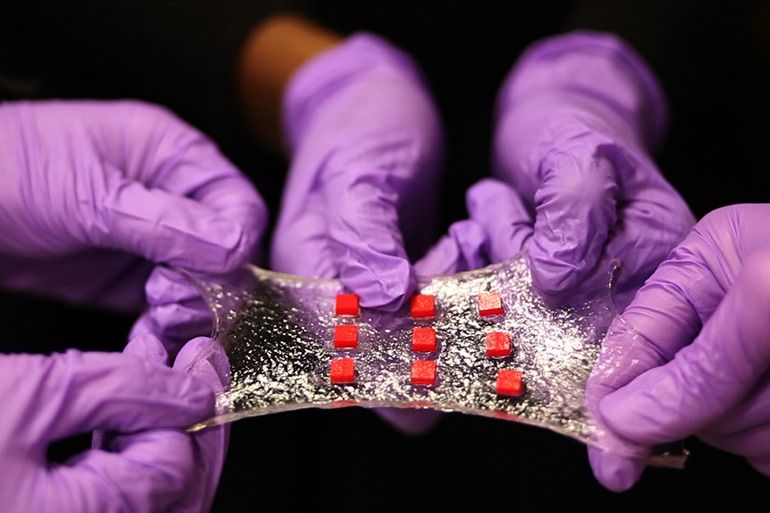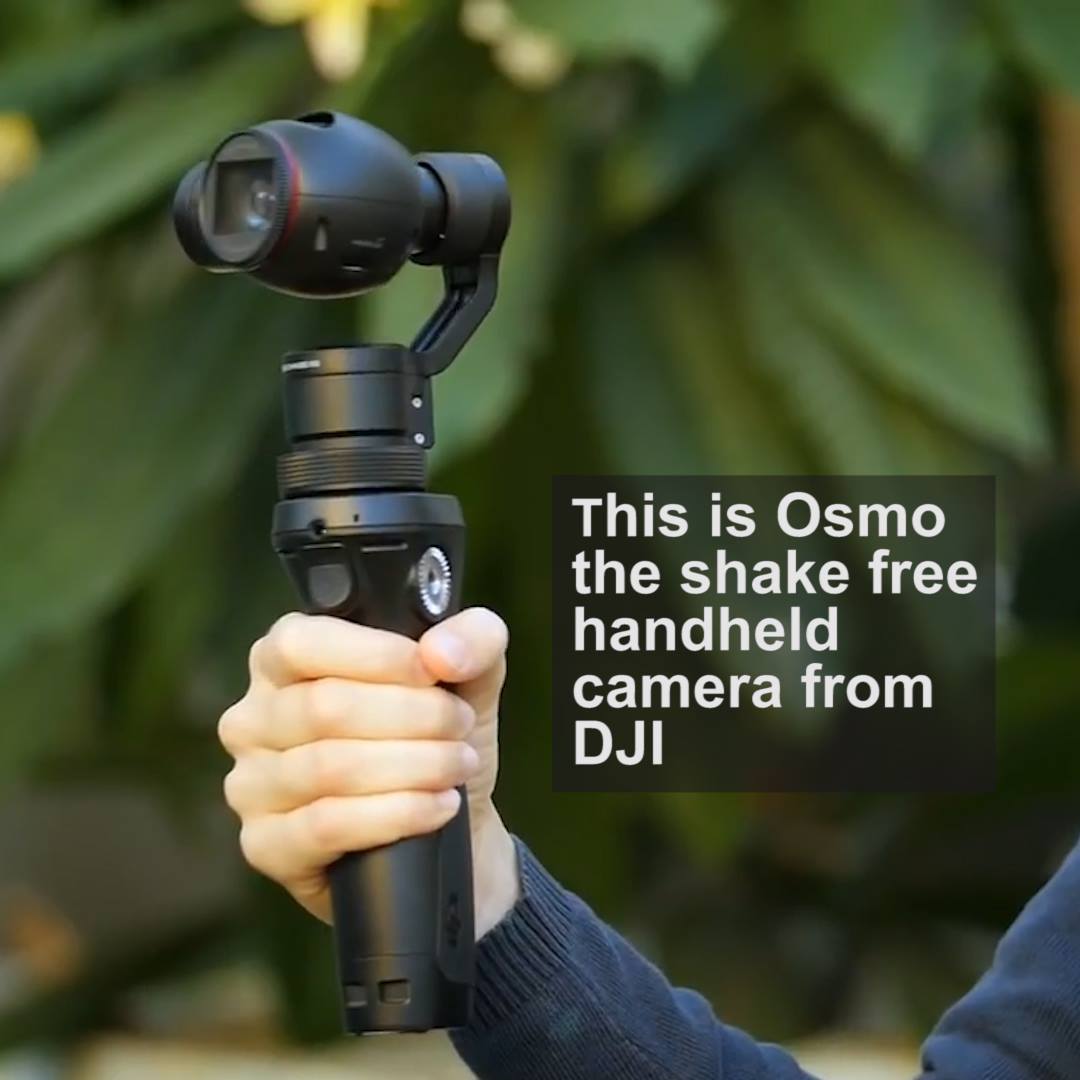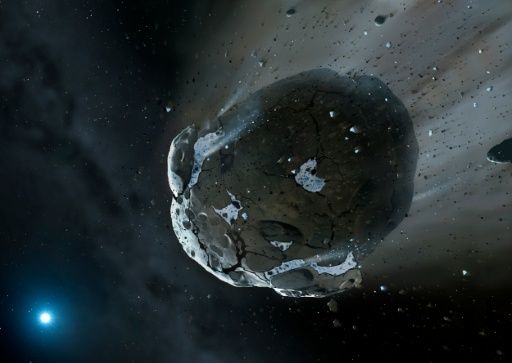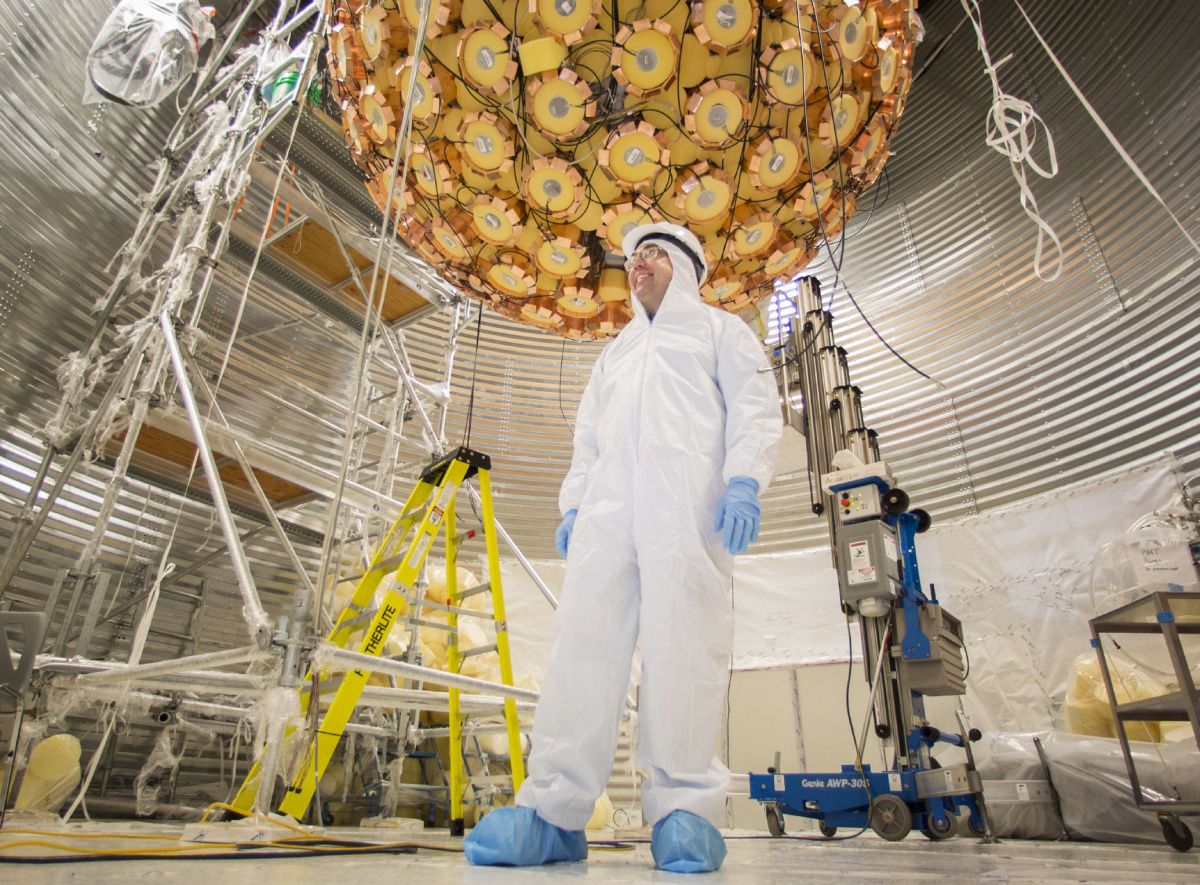Page 11580
Dec 8, 2015
Flexible Electronics Used to Make Smart, Temperature Responsive Drug Eluting Patch
Posted by Klaus Baldauf in categories: biotech/medical, electronics, health, materials

At MIT, researchers have developed a stretchable bandage-like device capable of sensing skin temperature, delivering drugs transdermally, and containing electronics that include LED lights for displaying information. The various components of the system are designed to work together, for example the drug dispenser activating only when skin temperature is within a certain range and the LEDs lighting up when the drug reservoirs are running low. While this is only a prototype device, it certainly points toward future flexible devices that stay attached to a person’s skin, or even internally, for extended periods of time while providing health data and taking therapeutic actions in an intelligent way.
The device is based on a stretchable hydrogel matrix that reliably holds onto embedded metallic components linked by pliable wires. The hydrogel was made to have a stiffness similar to human soft tissues so that it blends well with the body when attached to it. When wires, drug reservoirs, delivery channels, and electronic components were built-in, the team tested the stretchiness of the final result showing that it maintains functionality even after repeated stress.
Dec 8, 2015
Verily, I swear. That’s Google Life Sciences‘ new name
Posted by Klaus Baldauf in categories: biotech/medical, health
MOUNTAIN VIEW, Calif. — Google Life Sciences, the Silicon Valley giant’s new foray into health and medicine, announced a new name Monday that slips easily off the tongue but might sound antiquated to a high-tech, life-sciences ear: Verily.
“Verily, I swear,” as Shakespeare wrote in Henry VIII.
The word means “truly” or “certainly.” It dates back to 13th century Middle English and fell out of common use … well, a while ago. It often pops up, however, in the still very popular King James Bible.

Osmo, the handheld shakefree camera.
This camera is pretty awesome! Time to make your next selfie vid look like a Spielberg movie.
Dec 8, 2015
Telomerase Therapy to Reverse Cardiovascular Senescence
Posted by Steve Hill in categories: biotech/medical, life extension
Exciting news as another group proposes to explore telomerase therapy for the Cardio Vascular system. This no doubt follows on from DePhino et al work on the P53-telomerase-PCG-1 aging axis work which showed the effects of short telomeres on vascular aging (and other organs) and its direct link to Mitochondrial function and Stem cell Decline via the P53-telomerase-PCG-1 aging axis.
Dec 8, 2015
Why Wait for the Internet of Everything
Posted by Shailesh Prasad in categories: internet, space

“The Internet of Everything – the moment cyberspace spills over into physical space.” Watch Jason Silva define our connected future. #WhyWait
Dec 8, 2015
The amazing camera that can see around corners (w/ video)
Posted by Shailesh Prasad in categories: electronics, energy

https://youtube.com/watch?v=Pi7iCUSXctY
How can a person see around a blind corner? One answer is to develop X-ray vision. A more mundane approach is to use a mirror. But if neither are an option, a group of scientists led by Genevieve Gariepy have developed a state-of-the-art detector which, with some clever data processing techniques, can turn walls and floors into a “virtual mirror”, giving the power to locate and track moving objects out of direct line of sight.
The shiny surface of a mirror works by reflecting scattered light from an object at a well-defined angle towards your eye. Because light scattered from different points on the object is reflected at the same angle, your eye sees a clear image of the object. In contrast, a non-reflective surface scatters light randomly in all directions, and creates no clear image.
Continue reading “The amazing camera that can see around corners (w/ video)” »
Dec 8, 2015
New US space mining law to spark interplanetary gold rush
Posted by Shailesh Prasad in categories: alien life, materials
Flashing some interplanetary gold bling and sipping “space water” might sound far-fetched, but both could soon be reality, thanks to a new US law that legalizes cosmic mining.
In a first, President Barack Obama signed legislation at the end of November that allows commercial extraction of minerals and other materials, including water, from asteroids and the moon.
That could kick off an extraterrestrial gold rush, backed by a private aeronautics industry that is growing quickly and cutting the price of commercial space flight.
Dec 7, 2015
Can The Existential Risk Of Artificial Intelligence Be Mitigated?
Posted by Dan Faggella in categories: ethics, existential risks, futurism, government, human trajectories, robotics/AI
It seems like every day we’re warned about a new, AI-related threat that could ultimately bring about the end of humanity. According to Author and Oxford Professor Nick Bostrom, those existential risks aren’t so black and white, and an individual’s ability to influence those risks might surprise you.

Image Credit: TED
Bostrom defines an existential risk as one distinction of earth originating life or the permanent and drastic destruction of our future development, but he also notes that there is no single methodology that is applicable to all the different existential risks (as more technically elaborated upon in this Future of Humanity Institute study). Rather, he considers it an interdisciplinary endeavor.
“If you’re wondering about asteroids, we have telescopes, we can study them with, we can look at past crater impacts and derive hard statistical data on that,” he said. “We find that the risk of asteroids is extremely small and likewise for a few of the other risks that arrive from nature. But other really big existential risks are not in any direct way susceptible to this kind of rigorous quantification.”
Continue reading “Can The Existential Risk Of Artificial Intelligence Be Mitigated?” »
Dec 7, 2015
In a Sudbury mine, physicists probe secrets of dark matter
Posted by Aleksandar Vukovic in categories: cosmology, physics
Buried two kilometres underground in an active ore mine, DEAP-3600 is the most sensitive dark matter detector of its kind. Scientists are hoping to shine a light (so to speak) on one of the deepest mysteries of physics.













